The presence of a thermostat in the convector
Thermostat device in the convector.
In modern electrical devices, both electromechanical and electronic thermostats (which have an air temperature sensor) are used. All convectors, regardless of the type of thermostat, are equipped with overheating protection.
Such devices with a mechanical thermostat have the following features:
- affordable price;
- accuracy in measuring air temperature (+/- 0.5-1 ° С);
- when the heating is turned off and on, a characteristic click is heard;
- high reliability during operation in conditions of unstable supply voltage (summer cottage, village, and so on).
In electronic thermostats, a microcontroller thermostat is installed. Its temperature sensors regularly measure the temperature of the cold incoming air and send a signal to the control element, which is able to maintain a given mode with an accuracy of +/- 0.1-0.3 ° C.
Features of similar devices with electronic thermostats:
- higher price;
- completely silent work;
- good temperature measurement accuracy.
Due to the higher accuracy of temperature measurement, the use of convectors with an electronic regulator can provide energy savings of 3-5% compared to electromechanical designs. Models that have an electronic thermostat most often support several operating modes: economical, comfort, anti-freezing (the temperature is regularly maintained at + 5-6 ° C) and automatic.
Water heating radiators
Radiators for water heating systems are built in much the same way as oil appliances. But they are heated not due to oil, but due to the coolant circulating through the system. They are equipment for creating permanent heating. Scope of application - centralized and autonomous heating systems. They are better than oil ones in that they do not consume electricity. And if they are powered by an economical gas boiler, then heating costs will be minimal.
Radiators for water heating are better than their oil counterparts for their increased reliability. And they are also better than convectors due to the large heating area. They also do not raise dust into the air and are easier to wet clean. Connected to a single heating system, they allow uniform regulation of the heating temperature in all rooms at once.
However, water radiators can be equipped with thermostatic valves, realizing the possibility of individual temperature control in the rooms.
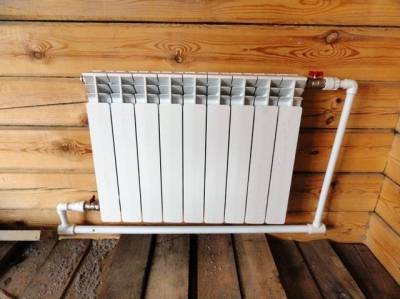
Water heating radiators are the most popular type of heaters used in our country.
Advantages of water radiators:
- These radiators have high heat dissipation;
- High environmental friendliness;
- Increased power of some models.
There are also several disadvantages:
- Convectors are better than radiators in that they are more compact. A striking example of this is miniature floor or baseboard models;
- Radiators are more expensive than convectors - therefore, the latter are slightly better in this regard;
- The radiator bodies are hot - in contrast to the same convectors.
The most significant drawback is the last one.
Additional functions
Different models of convectors may have a number of additional functions: the more there are, the higher the price, therefore, before buying, it is better to sensibly assess your needs and dwell on the model whose capabilities will be used to the fullest.
 Among the additional functions of electric convectors are often the following:
Among the additional functions of electric convectors are often the following:
-
frost protection
will work and protect the device if the room temperature drops below 5 degrees Celsius; -
ionizer
is able to improve the quality of indoor air, rid it of dust, saturate it with ions. By the way, in most models, the built-in ionizer can work without turning on the heating function.It is up to everyone to decide how much this option is necessary in the country, but if there is a possibility that the convector will then be used at home, then such opportunities will not be superfluous; -
timer
will help regulate the temperature in the room as efficiently as possible, save electricity; -
programming function
allows you to remember the last user settings, and after switching on, return to them. This is very convenient if there are frequent power outages: after resuming power supply, you do not have to re-set the optimal heating parameters.
There are three main dangers during convector operation:
- failure of the device when water gets in;
- spontaneous combustion;
- danger of electric shock.
The first indicator is characterized by a special IP index indicated in the device passport. The higher its value, the better protected the convector body. If you want to buy a reliable device that can be operated even in the bathroom, then choose an unit with an IP equal to 24.
The likelihood of spontaneous combustion can be reduced by purchasing a convector with overheating protection. This function turns off the power supply to the device at the moment when the heater temperature reaches the maximum permissible value.
If there are children in the house, it is very important that the appliance is protected against the risk of electric shock. The value of this parameter must have a value of at least 2, which means that the device does not need additional grounding of the case.
Additional options are not critical, but they can make the use of the device safer and more convenient.
Premium class
Comfort in use, high level of safety, quiet operation are the main advantages of the premium segment.
Noirot Spot E-5 Plus 2000 - Unique Design

The French manufacturer offers a model that can guarantee high safety of use, quiet operation, and the possibility of continuous operation. There is an eco-mode that allows you to maintain a comfortable temperature while saving energy.
Advantages:
- Class II electrical protection - no grounding required;
- function of restoration of operating mode after restoration of power supply.
Disadvantages:
- the set does not include wheels for floor installation;
- the sensor is not working accurately.
BHeat Air 3000 - Smart Heater

Energy-saving electric heater with a capacity of 3 kW. The model in a black skirting board type is suitable for heating rooms up to 30 m2, consuming 788 W / h.
BHeat Air 3000 is a vapor-droplet heater. The technology reduces energy consumption by lowering utility bills. The convector can be used as a constituent element for heating houses using the “smart home” system.
Advantages:
- digital thermostat;
- radio module.
Disadvantages:
no legs included.
EffectEnergo Premium EER-10/2000 - two types of heating

Each section of the device contains a separate heating element of low power (200 W), which is installed in the mold during the casting process, which ensures high energy efficiency of the structure. Section heating does not exceed 80 degrees. Multifunctional model with stylish design.
Advantages:
- simultaneous heating by thermal radiation and by convection;
- heat transfer area;
- electronic control;
- "Climate control", which allows you to regulate the temperature in the room with an accuracy of a degree;
- consumption 600 W / h.
Disadvantages:
not found.
Frico PFW 20 - hot water hairdryer

The hair dryer convector of the PFW series is suitable practically for residential and admin. buildings. The convector is convenient for heating in places where quick heating is required. Hair dryers are also suitable for drying clothes. The body is made of white painted sheet steel.
The model has a low operating surface temperature, which makes it safe to use even in children's rooms. If desired, the body can be painted by yourself, pasted over with foil. The Frico PFW 20 has IP24 enclosure protection.
Advantages:
- power 2 kW;
- wall mounting.
Disadvantages:
one operating mode.
Stiebel Eltron Sahara MHS 165 E - stone body

Sahara heating panels are a 30 mm wide plate made of natural stone. A system of channels is drilled inside the block, where heating elements are installed, which effectively heat the stone panel.
A 4 mm thick heat-insulating plate is installed on the back of the case, which helps to direct the heat radiation into the room. Stiebel Eltron Sahara MHS 165 E, an exclusive model that can become a decoration of the room, office, dining room.
Advantages:
- wall mounting in a horizontal, vertical position;
- two thermal relays, ensuring safe operation of the device;
- the ability to accurately select the set temperature;
- protection class: IP 25
Disadvantages:
the thermostat is not included in the scope of delivery.
We calculate the cost of electricity
Now we will try to calculate the power of the equipment needed to heat the rooms. In our calculations, we will use the standard formula, based on which for heating 1 sq. m we need 100 watts of thermal energy. In the northern regions, this figure rises to 150 W, and in the southern regions it drops to 80 (it is best to focus on 100 W or check this indicator with the heating specialists of your region).

Remember a simple rule for calculating the power of the convector: multiplying the area of the room by 100 you get the power required for heating it in watts.
Let's say we need to heat a 50 sq. m of living space. For this we need electric convectors with a total power of 5 kW. If the devices work around the clock, then the daily consumption will be 120 kW. Based on the average cost of 1 kW of energy of 4 rubles (in different regions in different ways), the daily costs will be 480 rubles, and the monthly costs will be 14,880 rubles (for months with 31 days).
But convectors do not work around the clock - they periodically turn on and off, maintaining the set temperature. Therefore, we can safely reduce the amount received by half - we get 7440 rubles. It should also be borne in mind that winters can be warm, with a large number of days with positive temperatures. In this case, heating costs will be lower. Electronic control will also help to reduce costs, providing more accurate maintenance of the set temperature.
The main disadvantages of convector heaters
The disadvantages we are considering are the most striking shortcomings characteristic of the entire army of convectors. Some disadvantages can be neglected, some can be dealt with, but some negative features are very serious.
High power consumption
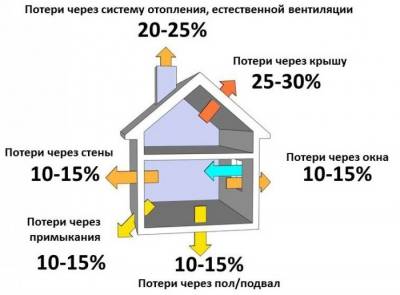
You can save on heating by getting rid of heat loss.
Of all the possible minuses, this minus is the most important. Electric heating equipment actually consumes a gigantic amount of electricity. And it's almost impossible to do anything about it. Count for yourself:
- For heating 10 sq. m. 1 kW of electricity is needed;
- For heating a household with an area of 50 sq. m. 5 kW of electricity per hour or 120 kW / day will be consumed - with an average cost of 1 kW of 4 rubles (depending on the region and the applicable tariff grid), this will be 480 rubles / day;
- For a month in which there were 30 days, the expense will be 14,400 rubles.
The final results may be less - it all depends on the amount of heat loss, the set temperature and the type of control system used. But in general, heating with convectors remains expensive - this is a minus.
A similar situation is observed with many other electrical heating devices, including boilers and radiators.
Equipment safety
The best electric heating convectors are the ones with the maximum number of protection modules.
We recommend that you always pay attention to the presence of built-in security systems, as they directly affect the safety of the users themselves and young children. Let's see what should be on board a safe electric convector:

Pay special attention to the safety of the convector, especially if you have children
- The rounded shape of the case - it would seem that there is nothing critical in this. But if the edges and corners are rounded, small children playing on the floor will not seriously injure themselves. You can grin endlessly and question this fact, but you need to take care of your children - hitting the temporal part of the head on an acute angle can lead to various troubles;
- The presence of protection against moisture and splashes in accordance with IP 24 - this will allow the operation of electric convectors in humid rooms. For example, if you want to hang heaters in a damp basement or bathroom, it is better to look at models with protection;
- Dust protection is an interesting option, useful not only for allergy sufferers, but also for healthy people. It is no secret that electric convectors (like any others) raise dust into the air, which is carried around the rooms. It affects human health, and heaters with dust filters allow you to trap dust particles and keep them inside;
- Fall protection - protects equipment and interior items from overheating and fire if the equipment accidentally falls to the floor;
- Overheating protection - has the same goals as in the previous paragraph;
- Frost protection - prevents freezing of premises and buildings in those moments when no one lives there. In this case, electric convectors maintain the air temperature at + 5-6 degrees.
Consideration should also be given to improved electrical protection - it is best if it still exists, as it ensures the safety of users.
Convector rating
 Based on the models considered, we will make a rating of convectors in terms of reliability, quality and cost.
Based on the models considered, we will make a rating of convectors in terms of reliability, quality and cost.
In terms of reliability, the leading position is occupied by Neurot convectors. Next come the models of the manufacturers Atlantik, Electrolux and Ballu.
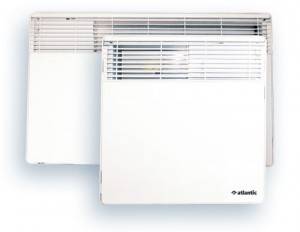 The best wall convectors are Neurot and Timberk. Timberk is again the leader among floor heating manufacturers. Good models are also produced by Electrolux and Ballu.
The best wall convectors are Neurot and Timberk. Timberk is again the leader among floor heating manufacturers. Good models are also produced by Electrolux and Ballu.
But among the inexpensive brands, Atlantic convectors can be called. Cheap heating devices are also produced by the Delonghi company. In general, the reviews about the models of this manufacturer are good. Therefore, if you want to buy a floor convector, the price for which is low, you can safely buy Delonghi products.
It is difficult to give an unequivocal answer which of the described convector models is worth purchasing.
 It all depends on the operating conditions, your preferences regarding design, power and other technical parameters, as well as your financial situation. Of course, if the material condition allows, then it is better to purchase models from European manufacturers. In this case, you are guaranteed to get a quality device. If the budget is limited, then you can stop at cheaper Chinese brands.
It all depends on the operating conditions, your preferences regarding design, power and other technical parameters, as well as your financial situation. Of course, if the material condition allows, then it is better to purchase models from European manufacturers. In this case, you are guaranteed to get a quality device. If the budget is limited, then you can stop at cheaper Chinese brands.
Types of thermostats
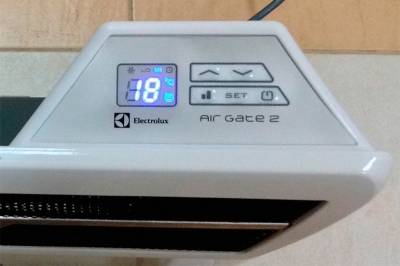
Models with electronic control and thermostat are more comfortable and economical to operate.
The industry produces two main types of electric convectors - with mechanical and electronic control systems. It is impossible to answer which of this is better, since both varieties have their pros and cons. Here everything again depends on the operating conditions.
Electric convectors with mechanical thermostats are very, very simple.There are no sophisticated electronics on board, which already indicates increased reliability and good maintainability. These thermostats are built around a simple bimetallic plate. It changes shape under the influence of the room temperature, opening or closing the contact. This ensures thermoregulation. The disadvantages of this scheme are the low accuracy of temperature control. But such devices are better because they are cheaper and more reliable.
Electronically controlled electric convectors are equipped with high-precision temperature sensors. The data from them is monitored by precise electronics that control the on / off of the thermostats. This ensures high efficiency of the equipment, since the air in the heated premises does not overheat and does not overcool, forcing the expenditure of surplus electricity. Here's why such convectors are better:
- Temperature control accuracy;
- The ability to adjust parameters in a remote mode;
- Energy savings - up to 10%;
- Availability of additional service functions.
Of the minuses - a more complex device, high cost.
For permanent heating of houses and apartments, it is best to choose electric convectors with electronic control. If the technique will be used only periodically, it is easier and cheaper to stop at devices with "mechanics".
Electric convectors
Let's start with electric convectors. It seems that for a small summer cottage this is an ideal option. Many electric heaters of this type already from the conveyor have the ability to automatically control the temperature, such as, for example, Noirot convectors.
As you know, the efficiency of a convector on electricity is almost 100 percent. There are no losses for the transfer of the coolant, the electric current is actually directly converted into heat energy.
However, electric heaters have one, but significant disadvantage. This is the cost of electricity for the population. At a price of 3 rubles per 1 kW of electric energy, heating a summer house becomes a rather expensive process. Of course, it is possible to program the convectors to operate at the night rate.
However, let us dwell on one more unpleasant feature of the suburban electric heating. In SNT, there are usually very small allocated capacities for each country house. Typical allocated power for each house can be from 1.5 to 3 kW. Rarely, when the house is allocated "standard" 10 kW. Also in gardening partnerships, there are usually old worn-out nets and the same unreliable KTP.
All this leads to the fact that not every SNT and not every house can use electric convectors for heating.
For example, heating an ordinary country house with good insulation of walls and ceilings with an area of 30 square meters (house 5x6 m) will require a thermal power of 3 kW. If only 3 kW is allocated for the house, then you can forget about the kettle, TV and other benefits of civilization.
And therefore, in this case, it becomes interesting another opportunity to heat a country house - gas convectors.
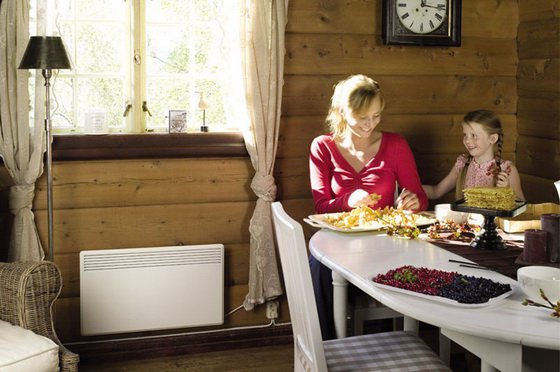
The principle of operation and the device of the convector
To understand what a convector is, you need to understand how it works and how it works. The functional performance of the device is associated with the convection process, it allows the air to rise to the ceiling after it warms up and loses its density. The heater has a simple design and consists of:
- from the body;
- from the heating element.
The heating element is a conductor that is installed in a metal case. Outwardly, it looks like a simple radiator-heater and is located at the bottom of the device.When cold air gets inside, it heats up. Then it rises and exits through the outlets, which are made at a slight incline. Rising to the ceiling, warm air gradually cools down and descends. Such heating with electric convectors allows you to evenly warm up the room.
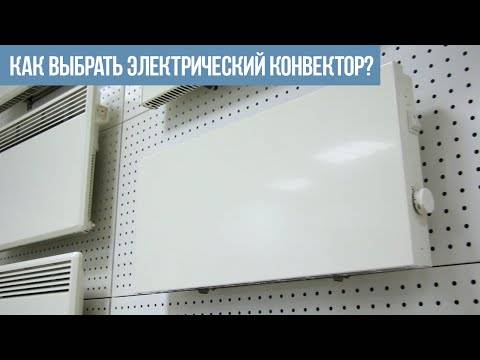
How much power do you need?
The power of an electric convector is one of the key parameters when choosing it. It all depends on what area premises
need to be heated, i.e. before buying, you need to know the area of the country house or, just in case, measure all the necessary parameters so as not to be mistaken.
So, the easiest way to estimate the required power is an elementary calculation: for each square area, 100 W of power is required
... This is provided that the height of the ceilings fluctuates between 2.5-3.2 m. Further, one should proceed from the characteristics of a particular room: the presence of insulation, the size of windows and doors, the possible location of the cellar directly under the house and other nuances. Experts advise buying as many convectors as there are windows in the room: if you plan to stay in the country for a long time in winter, then it is better to heed this advice, otherwise, of course, you can do with one heater.
Design features include parameters such as:
- device height;
- the thickness of its body;
- the form.
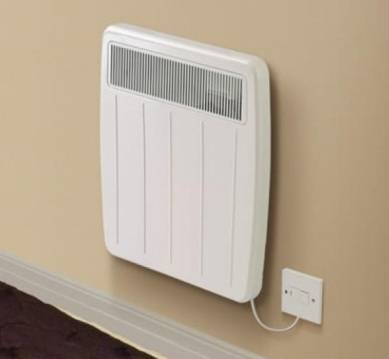 Convectors of different sizes can be found on sale, but usually the height of the device varies from 20 to 50 cm, although individual models can be found much higher. The thickness of the housing is especially important for wall-mounted convectors, allowing them to be placed compactly on the surface without the risk of injury to anyone by hitting the appliance. But it is worth knowing that the thicker the device, the higher its heat transfer, therefore, when deciding on a purchase, do not go to extremes, choosing a device with a thickness "like a sheet".
Convectors of different sizes can be found on sale, but usually the height of the device varies from 20 to 50 cm, although individual models can be found much higher. The thickness of the housing is especially important for wall-mounted convectors, allowing them to be placed compactly on the surface without the risk of injury to anyone by hitting the appliance. But it is worth knowing that the thicker the device, the higher its heat transfer, therefore, when deciding on a purchase, do not go to extremes, choosing a device with a thickness "like a sheet".
As for the shape, most often convectors are produced in a rectangular design, although if you try, you can find a round one. In this case, the shape does not affect the efficiency of the device in any way.
Electric convectors
If the household is not connected to the gas main, consumers often resort to using electric heating systems. Recently it has become fashionable to use convectors here. They allow you to do without installing radiators and a boiler, as well as without pulling pipes around the house. Convector heaters only need an electrical supply, without requiring a heating medium. Agree, it is much easier to bring wires to the installation site than a pipe with hot water.

All convectors work according to the same principle.
Electric convectors work on the principle of natural convection. They heat up the air, causing it to rise up and out of the equipment. Rising to the ceiling, it displaces cold air masses from there, which are sucked into the convectors and follow the same path. All this is controlled by mechanical or electronic thermostats that regulate the temperature by turning on / off the heating element. Moreover, it is better for the consumer to choose devices with electronics - they are more economical.
The heart of convector heaters are heating elements with a large fin area. They heat the air masses, the proportion of thermal radiation from them is extremely small.
Advantages of convectors:
- Autonomous work without a coolant - a solid saving of money on the creation of a heating system;
- Possibility of combining several convectors into a single network with centralized heating - this way it is better and more convenient to control the temperature in the rooms;
- Extreme simplicity of design - there is simply nothing to break here;
- Ecological cleanliness - convectors do not burn oxygen and practically do not change air humidity;
- Ease of installation - it is enough to bring wires with electricity to the equipment.
In addition, electronically controlled electric convectors are often endowed with auxiliary functions, turning them into modern heating equipment. If you are a fan of modern functional technology, it is better to choose electric convectors with electronics on board.
Disadvantages of convectors:
- High electricity consumption - at current energy tariffs, electric convectors will never keep up with heating systems powered by gas or other energy sources;
- Decrease in efficiency during prolonged work - therefore, it is better to set the temperature slightly above normal;
- The possibility of electric shock - this happens when operating faulty equipment.
Despite some disadvantages, electric convectors remain the simplest and most affordable heating devices.
When choosing convectors, it is best to purchase units from well-known brands - on their basis you will create a reliable and durable electric heating.
